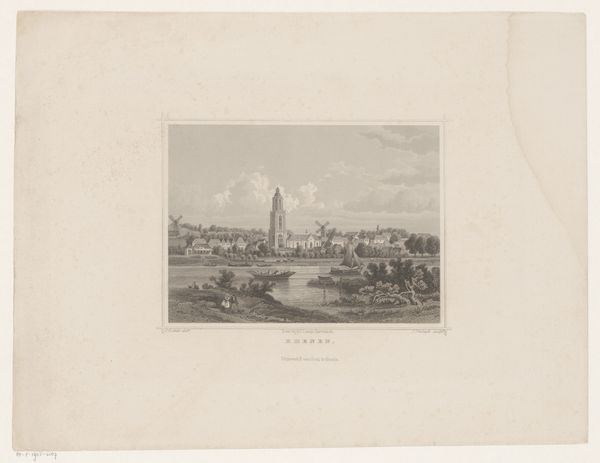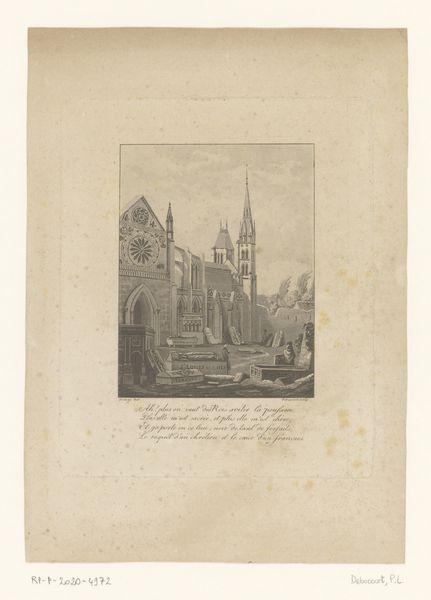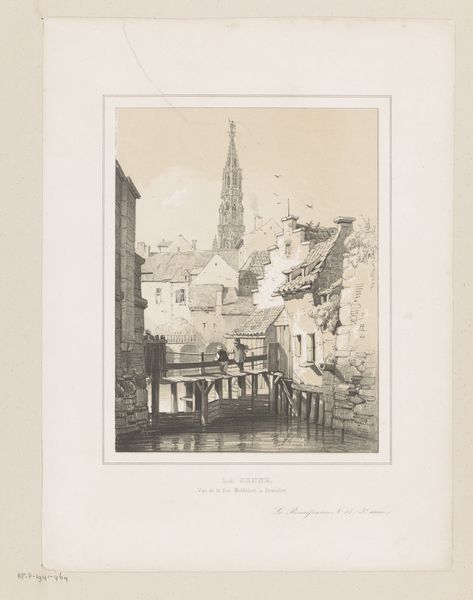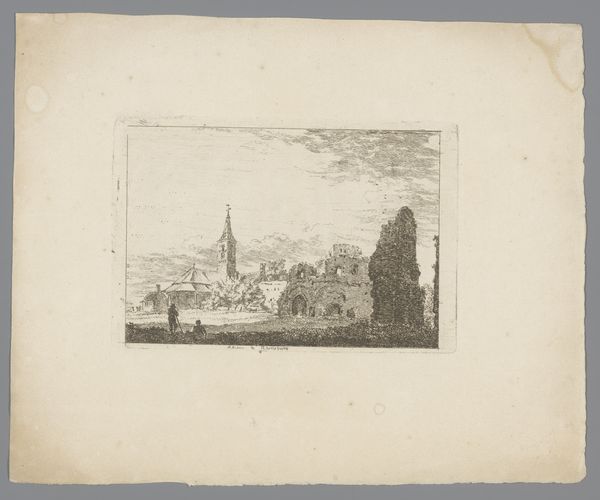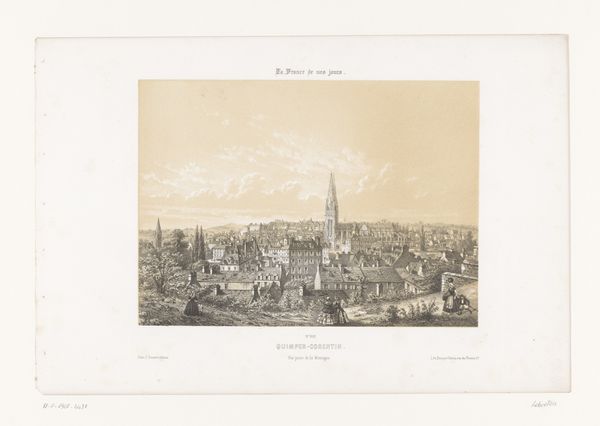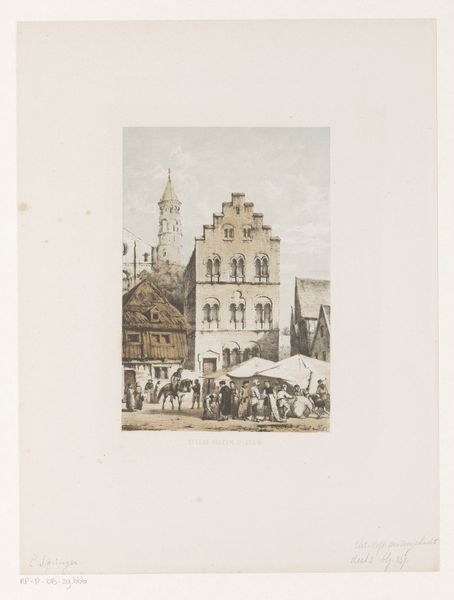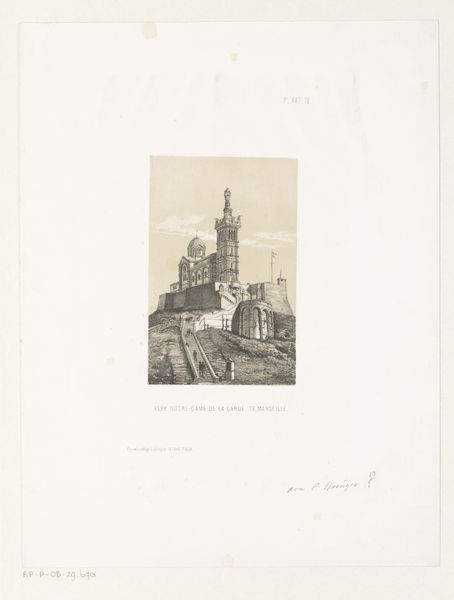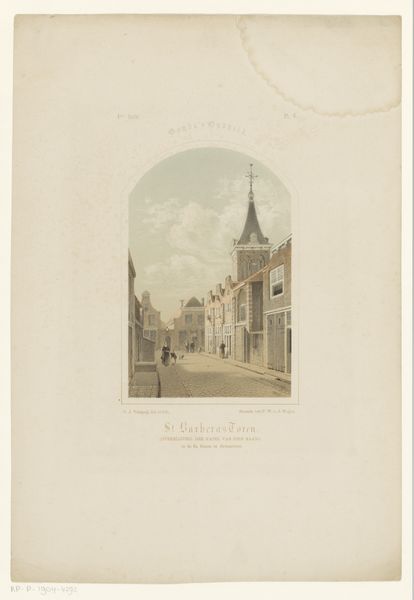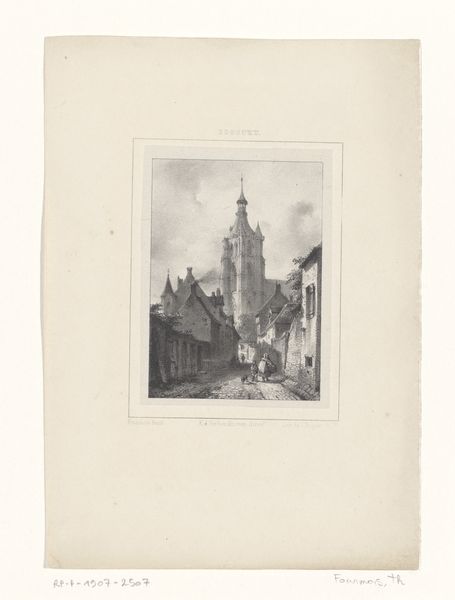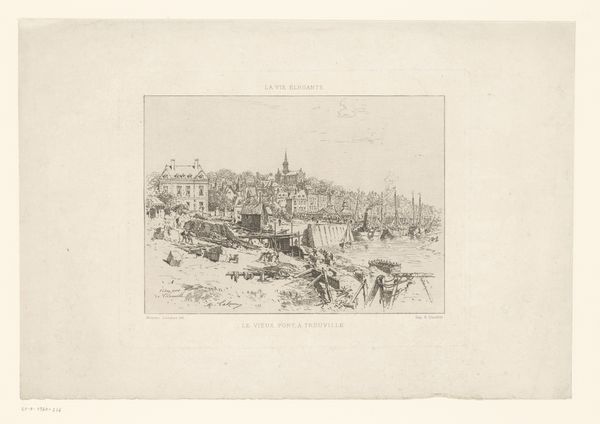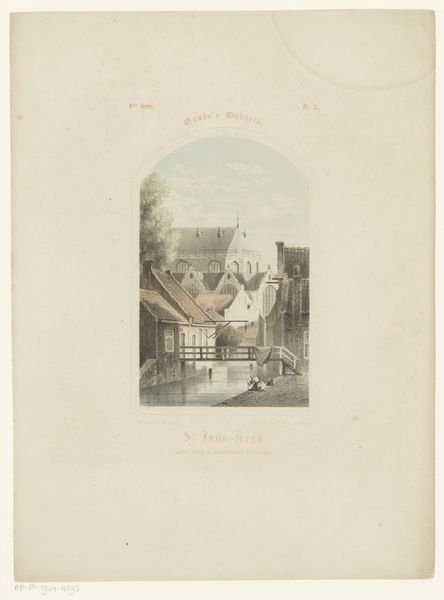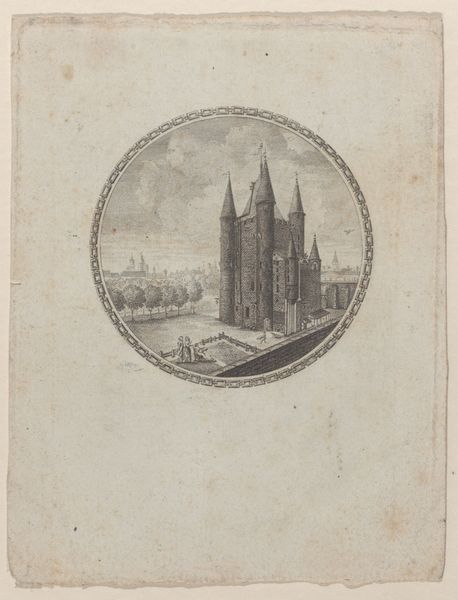
drawing, etching, paper, pencil
#
drawing
#
etching
#
paper
#
pencil
#
line
#
cityscape
#
realism
Dimensions: height 179 mm, width 117 mm
Copyright: Rijks Museum: Open Domain
Editor: We're looking at Gottfried Lorenz's "Stefansturm," an etching and pencil drawing on paper from sometime between 1870 and 1928. The cityscape, framed in an oval, is incredibly detailed despite the muted palette. What strikes me is the imposing height of the steeple relative to the city itself. What do you see in this piece? Curator: I see the echoing presence of sacred space dominating the secular, the earthly city below. The spire, rendered with such painstaking detail, functions as a visual signifier of aspiration, of reaching beyond the mundane. It pulls the eye – and the spirit – upwards. But look at the oval frame – it feels almost like an eye itself, perhaps suggesting observation or a curated view of history and faith. Editor: That's fascinating – the spire as aspiration and the oval as observation. Do you think the choice of etching emphasizes a particular aspect of the work? Curator: Absolutely. Etching allows for a certain delicacy, a web of lines that suggest both structure and fragility. The light seems almost to emanate from the tower, a beacon. The etched lines give a sense of timelessness, a cultural memory embedded in the image. And pencil too -- preliminary perhaps, and then deliberately included. Why include both? It gives the steeple and tower a dual significance of concept and completed realization. Editor: It's interesting how technique contributes to meaning. I hadn't thought about the implications of using both pencil and etching for that duality. Curator: Images, especially those persisting across time like St. Stephen's Cathedral, aren't just representations. They're vessels, carrying layered cultural meanings and prompting individual reflection. The steeple becomes shorthand for a set of beliefs and community. Editor: So, seeing beyond the mere depiction is key. It’s been so helpful to look at how these visual components together symbolize continuity. Curator: Precisely. We find ourselves decoding visual messages that, while rooted in a specific time, still resonate with the enduring power of faith and memory.
Comments
No comments
Be the first to comment and join the conversation on the ultimate creative platform.
